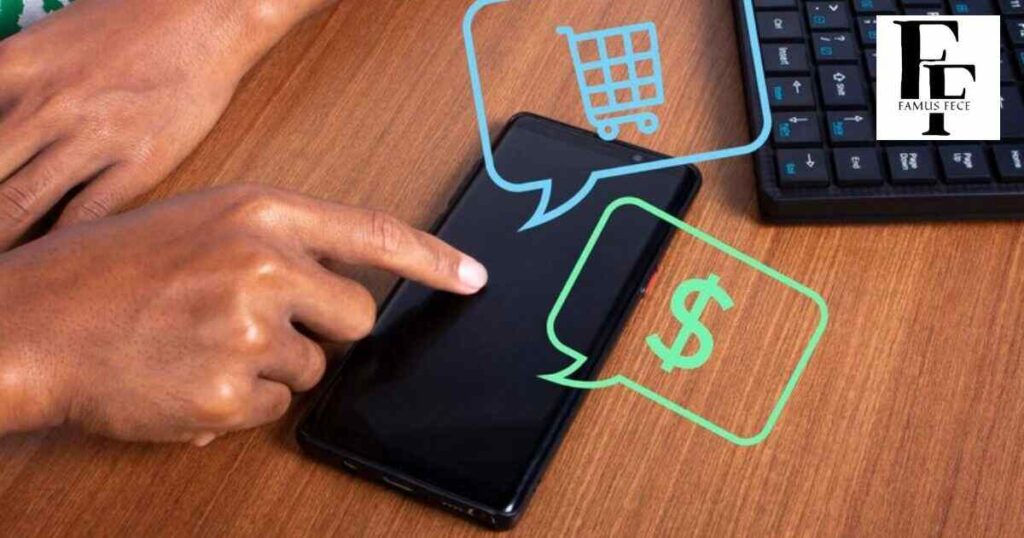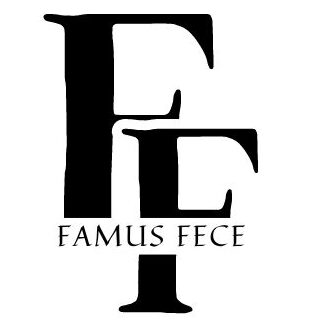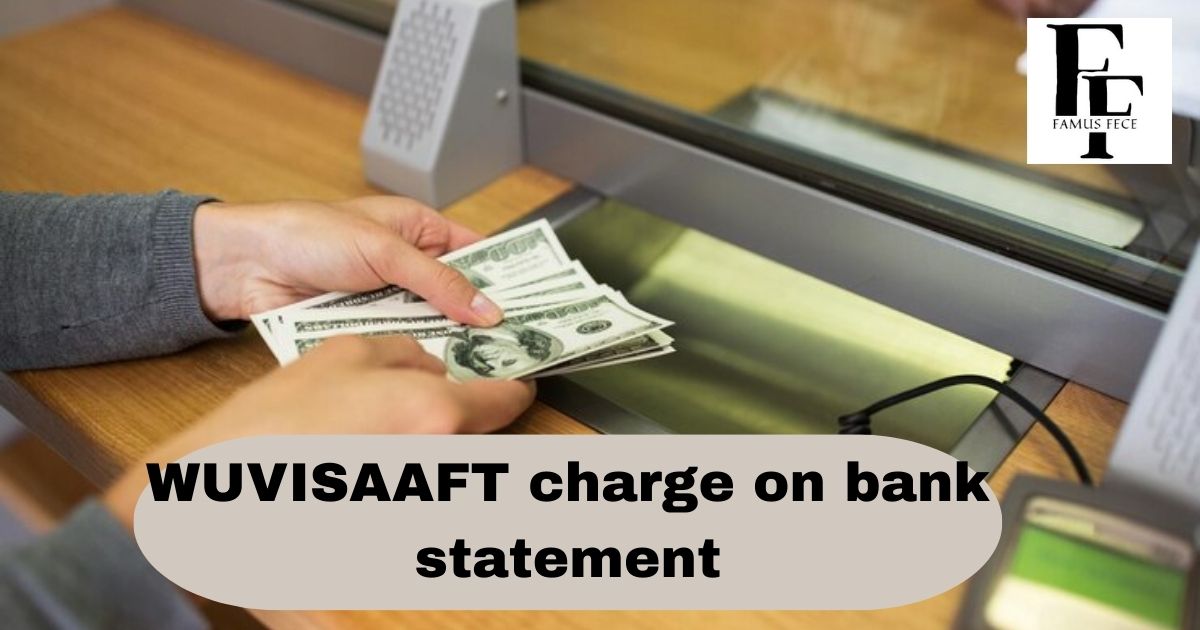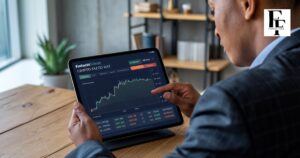WUVISAAFT stands for the long name “Worldwide Uniform Value Interbank Settlement Service Address for Transactions. It is a fee that banks put on your account when moving money between banks in different countries. It may seem confusing but it just means your bank sent money somewhere outside your home country.
Most people notice the “WUVISAAFT” fee when traveling abroad and using their debit or credit cards. Whenever you pay in another currency, your bank has to change your money from one type to another. The WUVISAAFT fee is what your bank adds each time these international currency exchanges and money happen. Simply put, this fee pertains to transferring and transferring funds across international borders via the global banking system.
Decoding the Charge Code: WUVISAAFT
When you use your debit or credit card overseas, your bank exchanges your money into the local currency. They do this at the current exchange rate. However, banks charge a small fee, usually around 3%, for providing this service of making purchases in other countries. The “WUVISAAFT” code on your statement just identifies these international transaction fees.
Why does the “WUVISAAFT” charge appear on my bank statement?
When your bank exchanges money between currencies for things like using your card abroad, the “WUVISAAFT” charge shows up. Your bank works with partners around the world through the global bank network to process transactions in different currencies.
Banks universally charge a small fee for this service, and the WUVISAAFT code simply labels it as the cost of internationally swapping funds for your overseas purchases or withdrawals.
On bank statements, what do square charge fees mean?

If you see “Square” charges or fees on your business bank statement, they refer to Square payment processing services. Square provides affordable card readers and payment processing for small companies and independent sellers. Their small square card readers let merchants accept credit cards and tap payments directly on phones and tablets.
Square charges a flat 2.6% fee per swiped transaction, plus a $0.10 fee per online payment. So any payment your business makes using a Square reader will appear on your statement as “Square,” along with the transaction amount and deducted fees.
Knowing this can help decode the Square charges that show up daily, as their services now process over $200 billion a year for millions of businesses worldwide.
Read More About: What is Int. I digital charge on your bank statement
What is the relationship between WU, VISA, and AFT?
WU stands for Western Union. Western Union is a large money-transfer company that allows people to quickly send and receive cash internationally. They have locations all over the world where you can physically pay or pick up money transfers.
VISA is a major payment network. Banks can issue credit and debit cards through VISA, which are globally usable for purchases, cash withdrawals from ATMs, and other transactions. The VISA network processes the purchase when you use your VISA credit or debit card, managing the transfer of funds between banks.
AFT is an acronym for Automated Funds Transfer. This refers to the electronic transfer of money from one bank account to another without any physical cash changing hands. When you make a VISA card purchase or send money via Western Union, an Automated Fund Transfer (AFT) takes place in the background, transferring funds from the sender’s bank to the receiver’s bank across various institutions on a digital network.
Why do people use Western Union?
Western Union is a popular way for people to send money to others in different countries. Many people use Western Union when they want to send cash to family or friends living abroad. It’s convenient because you can walk into any Western Union location and pay to have money instantly delivered to the recipient. This can be useful in emergencies.
Western Union is also affordable for smaller money transfers compared to international bank wires. Sending a few hundred dollars somewhere else overseas can cost less than $20 using Western Union. For people who regularly need to help support loved ones in other places, Western Union offers a cheap solution.
Not everyone has a bank account or credit card to use other online money transfer services. Western Union accepts cash, so it provides an option for those who only deal in physical currency. For its fast, low-cost international transfers of actual cash, many continue to find Western Union a reliable method of money sharing across borders.
What is the “Community Pay Online” Charge?

Have you ever seen the phrase “COMENITY PAY OH WEB PYMT” listed as a charge on your credit card statement? You made an online payment to a store using your credit card. The company that processes these web payments for certain retailers is named “COMMUNITY.”
Specifically, “COMENITY” handles all the online credit transactions for stores like Wayfair, TigerDirect, and BuySeasons. Therefore, a “COMMUNITY PAY OH WEB PYMT” charge would appear for any direct credit card purchases made through one of their websites. They simply use this to indicate that their payment processing service handled the online payment.
What’s the “PAI ISO” fee?
Your credit card statement may list a charge as “PAI ISO” and leave you wondering what it means. “PAI” stands for Payment Account Identifier, while “ISO” stands for Independent Sales Organization.
When combined, they serve to identify payments made through an independent payment processor instead of directly with the merchant. Large payment networks like Visa use ISO to route transactions from merchants to banks.
For example, if you purchase at a small local store, they likely process payments through an ISO instead of big payment companies. The ISO receives the payment information and carrier billing details and then routes them through their membership in payment networks like Visa. Your statement’s “PAI ISO” label signifies a transaction that went through one of these third-party payment organizations instead of the merchant.
How does the “WUVISAAFT” charge appear on a bank statement?
The “WUVISAAFT” charge will appear on your statement, along with the transaction date, the amount charged in your currency (such as US dollars), and a reference code or short description to identify it. For instance, it might display “06/15 WUVISAAFT -$15.00” to indicate that your account incurred a $15 fee on June 15th.
We will group it with any related foreign transactions that triggered the currency exchange. For example, if you purchased lunch in Europe, the foreign currency would list the food purchase amount first, followed by any dynamic currency conversion fee. Then the “WUVISAAFT” charge follows, which will collectively bill you for all international transaction costs. This relates to overseas card usage or fund transfers.
Is the WUVISAAFT charge refundable?
Your bank charges the WUVISAAFT charge to complete an international money transfer, so you cannot refund it. Banks see these fees as regular costs for facilitating currency exchanges and transfers between institutions worldwide.
However, in rare cases, banks may refund a WUVISAAFT fee. For example, if a purchase was fraudulent and the bank sided with you, they could refund fees associated with that transaction, including the WUVISAAFT charge. Otherwise, it represents a standard processing cost that banks usually do not return under normal conditions.
You could also ask your bank if they offer refunds on international fees as part of special accounts or promotions. However, the WUVISAAFT fee is mostly universal and non-refundable once incurred.
Is Western Union the only service that charges this fee?
No, Western Union is not the only one that charges the WUVISAAFT fee. Any institution that facilitates an international currency exchange or border money movement may apply. Global banks also charge for processing personal wires or international debit or credit purchases.
Other places, besides Western Union, impose the standard WUVISAAFT fee for moving money between countries. Popular names like MoneyGram, Xoom, Wise, and WorldRemit bill it on top of rates when completing overseas deliveries involving multiple banks across borders.
How to Avoid “wuvisaaft” Bank Charges?

A few things can help minimize “wuvisaaft” fees on your statement. Combining international purchases into a single, major trip could be beneficial, as banks may charge a fee for each transaction rather than a bundled one.
Ask your bank about accounts reimbursing foreign fees each month as well. Another option is to research credit cards without foreign fees, which is useful when traveling abroad. Purchasing foreign currency at a lower exchange rate versus dynamic checkouts also cuts potential fees.
Conduct transactions through your bank.
Rather than services like Western Union, transferring internationally through your bank allows for better cost control. Banks tend to provide cheaper exchange rates for transferring between your accounts versus third parties. By maintaining a positive account history and balances, you could qualify for lower preferred rates.
Banks also make fee challenge requests easier compared to other sources if any charges seem incorrect later on. So, whenever possible, try routing money moves through your home financial institution to cut global costs.
Regularly reviewing charges
It’s a good idea to log into your bank account or browse mobile apps every few weeks to review all charges listed. This helps catch any fraudulent or mistaken transactions early. Checking also allows you to identify recurring service charges and check fees, such as “wuvisaaft,” that may apply each time different activities are performed.
If any charges seem incorrect, immediately contact your bank so they can research and resolve the problem. Regular reviews help exercise better oversight of your finances and spending habits.
Set up alerts
It’s a good idea to set up account alerts through your bank to receive notifications for certain transactions or activities. You have the option to receive notifications for transactions exceeding a specific amount, international purchases, or fees applied to your account. In this manner, you remain informed about pertinent activity even when you don’t check your statements.
Catching unauthorized or miscoded charges early allows for faster resolution. Some banks even let you set custom alerts for specific merchants or trigger words like “WUVISAAFT.” Receiving alerts through email, text, or banking apps helps improve oversight of your finances without constant logging in.
Minimise unnecessary transactions.
Reducing unnecessary international transactions can help lower “WUVISAAFT” fees over time, saving money. For example, aggregating several small trips worth of foreign currency rather than withdrawing cash on each visit reduces conversion fees. You may also pay in the local currency rather than converting funds many times if traveling in Europe.
Using debit or credit and only taking needed cash avoids paying ATM owners’ fees as well as bank charges. Planning large trips for fewer but longer stays minimizes superfluous transactions. The average traveler could potentially save over $50 annually by implementing these strategies.
FAQ’s
How do I find out where a charge came from?
Check your bank statement for the name of the company charged. Look at any descriptions or references provided. Call your bank and ask them to investigate further if details are unclear.
How do I stop unauthorized Google charges?
Log into your Google account and change your password. Review connected payment methods and remove any unauthorized cards or accounts. Contact Google support and dispute unauthorized charges for refunds.
Can I trace a bank transaction?
Your bank should be able to see details like the merchant name, location, and vendor information for most transactions processed through major card networks. Ask your bank to provide specifics on a particular transaction you want to trace.
Will the bank refund an unauthorized transaction?
Banks will refund unauthorized charges if you report them. But, policies vary so check with your specific bank about situations that qualify for refunds and their processes for disputing unauthorized transactions.
Why is Google charging my bank account?
Google charges related to subscriptions, app purchases, YouTube premium, or data storage upgrades on your Google account are possibilities. Check your Google payment settings and subscription details to confirm authorized vs unauthorized charges.
Can banks find out who used your card?
Banks can sometimes trace physical card transactions to specific merchants if the vendor provides their address. Online or digital purchases are generally harder to trace to individuals. Reporting stolen card limits help banks identify unauthorized usage.
Why does Google charge 30%?
The standard 30% charge covers costs Google incurs for hosting apps, handling payment processing, and providing digital services and support to users and developers worldwide. This revenue share model is common in virtual marketplaces and digital content industries.
Final Thoughts
we explored what the WUVISAAFT charge represents on bank statements as well as strategies for reducing or avoiding it. The WUVISAAFT code tells banks how much to charge for foreign transactions like exchanging money or sending money to another country. This is a hidden fee that you have to pay every time you use a credit card or send money abroad because it has to be settled between banks around the world.
As a standard processing fee, the fee itself is usually non-refundable. However, people can lower their WUVISAAFT charges by planning their trips together, using credit cards that don’t charge foreign transaction fees, buying foreign cash ahead of time, sending money through their bank instead of a third party, setting up account alerts, and not making as many transactions overseas as they need to.
Monitoring statements also help catch any errors that could qualify for charge reimbursements. , understanding what triggers the WUVISAAFT fee allows better management of international banking costs.

Experienced website administrator Specializing in general topics. Skilled in managing content, Optimizing User Experience, and ensuring site functionality. Dedicated to Delivering Quality and Engaging online experiences for Visitors.












